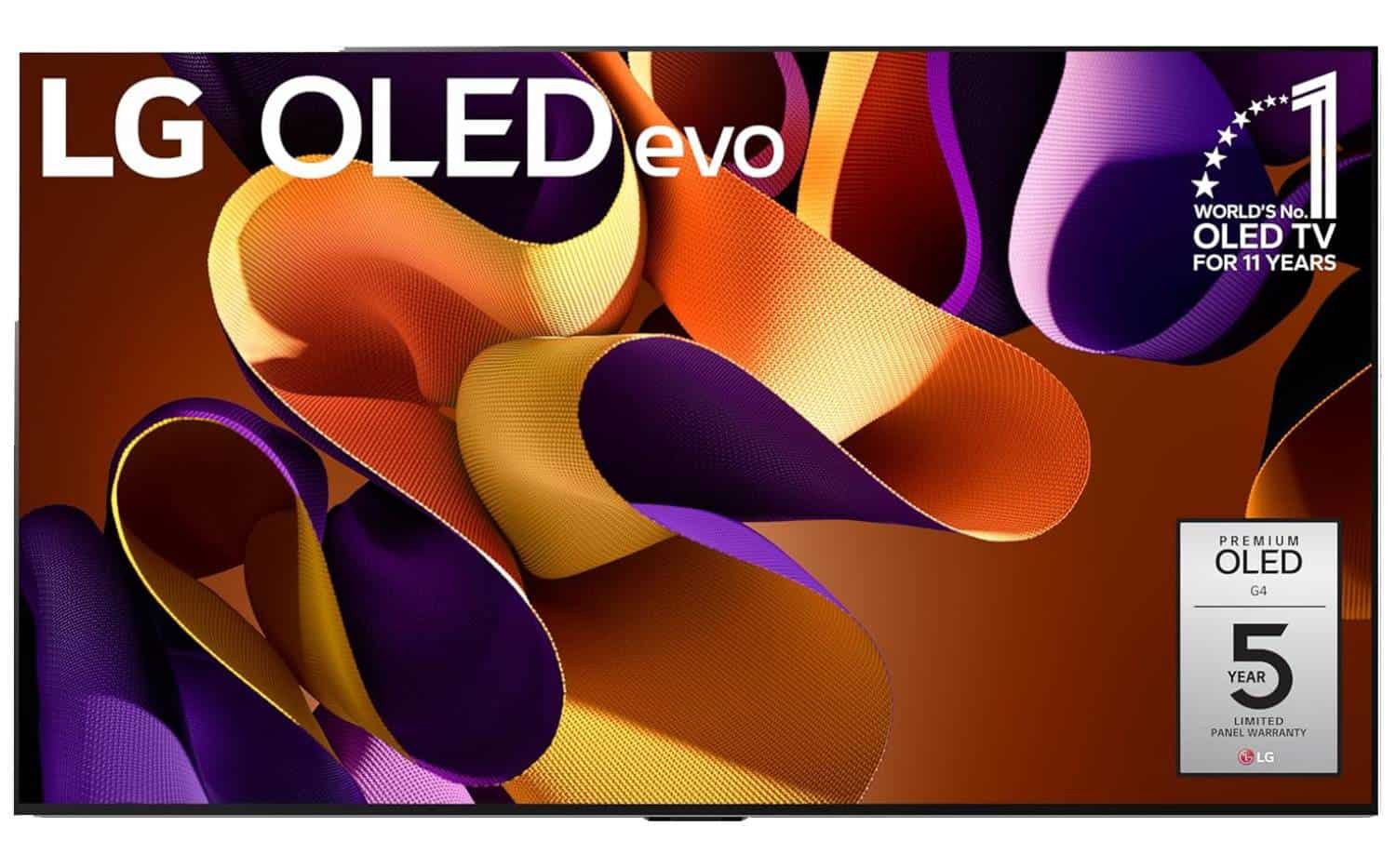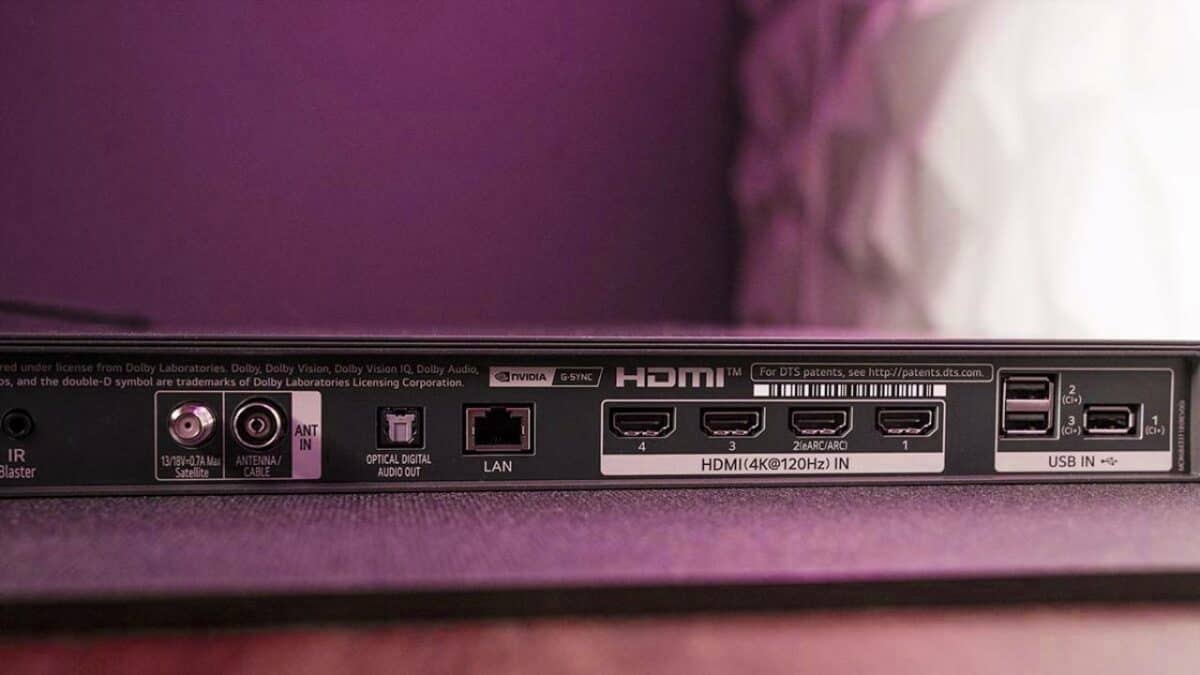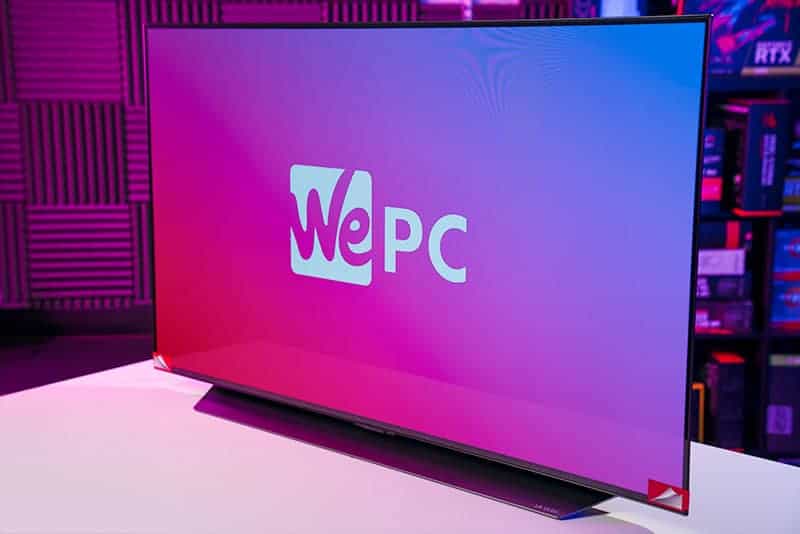
LG G4 OLED Series

Bright second-gen MLA OLED panel
Up to 144Hz, ideal for gaming PCs
Rapid responsiveness
Upgraded Alpha 11 AI Chip
MLA now available in 83″ model too
Expensive
Still no MLA in 97″ model
About time we compared LG G4 vs LG M4 OLED TVs, is wireless worth it?

WePC is reader-supported. When you buy through links on our site, we may earn an affiliate commission. Prices subject to change. Learn more
Both of these high-end LG OLEDs were announced back at CES 2024, but how do the LG G4 vs LG M4 OLED TVs compare? Right away, we can tell you that these two models are very similar in many ways, but there is a key difference – the wired vs wireless design. We can explain how it all works while you get ready for the LG G4 release date and LG M4 release date, with the latter expected a little later than the more mainstream G4.
There’s no doubt that these two are a couple of the best OLED TVs to date, which in turn makes them great gaming TVs as well. We’ve already compared the likes of the LG G4 vs LG G3 OLED TV, so let’s see how two models from the same generation compare and contrast on specs, price, design, and more.


Bright second-gen MLA OLED panel
Up to 144Hz, ideal for gaming PCs
Rapid responsiveness
Upgraded Alpha 11 AI Chip
MLA now available in 83″ model too
Expensive
Still no MLA in 97″ model

Wireless design for easier cable management
Bright MLA panel for most models
144Hz refresh rate
Same crisp visuals as LG G3 OLED
Upgraded Alpha 11 AI processor
Very expensive
No 55″ model, no MLA on 97″ model
Shop on Amazon
CHECK PRICE| Specification | LG G4 | LG M4 |
|---|---|---|
| Sizes | 55″, 65″, 77″, 83″, 97″ | 65″, 77″, 83″, 97″ |
| Processor | Alpha 11 AI Chip | Alpha 11 AI Chip |
| MLA (Micro Lens Array) | Yes (excluding 97″ model) | Yes (excluding 97″ model) |
| Screen technology | OLED | OLED |
| Screen resolution | 3840 x 2160 (4K) | 3840 x 2160 (4K) |
| Max refresh rate | 144Hz | 144Hz |
| Response time | 0.1ms | 0.1ms |
| Display connectivity | HDMI 2.1 (x4), Wi-Fi 6e, Bluetooth 5.2 | HDMI 2.1 (x3), Wi-Fi 6e, Bluetooth 5.2 |
| VRR | HDMI 2.1 VRR, AMD FreeSync Premium, Nvidia G-Sync | HDMI 2.1 VRR, AMD FreeSync Premium, Nvidia G-Sync |
| Audio | AI Sound Pro, wireless lossless Dolby Atmos | AI Sound Pro, wireless lossless Dolby Atmos |
Looking at the specifications of the LG G4 vs LG M4, you can see that not much separates them at all. They’re using the same OLED evo MLA panel for all models except the largest 97″ model, though it is now a welcome addition to the 83-inch panel unlike last-gen’s range. This technology helps boost brightness levels higher than ever, with a reported 3000 nits peak brightness for these 2nd-gen MLA panels.
Not too much to remark on here then as both TVs are identical in terms of the display itself. One interesting difference though is that the LG M4 OLED has just three HDMI 2.1 ports to the G4’s four. This is a side effect of the M4 using a Zero Connect box rather than ports on the TV itself as part of its wireless design – this is the key feature that contrasts the two.
Pricing details for the LG M4 are yet to be revealed, but we can get a good idea of how the cost will shape up upon launch by looking back to last year’s option. As for the G4, the pricing is already known since it already for sale have already been revealed. We’ve put together a table of the G4 and expected M4 pricing just below to help demonstrate the difference. The M-series also introduces a new 65″ with this 2024 generation, lowering the entry point cost for wireless.
| Size | LG G4 | LG M4 (expected) |
|---|---|---|
| 55″ | $2,600 | N/A |
| 65″ | $3,399.99 | $3,999.99 |
| 77″ | $4,599.99 | $4,999.99 |
| 83″ | $6,499.99 | $7,999.99 |
| 97″ | $24,999.99 | $29,999.99 |
As you can see, the extra convenience of the wireless feature bumps up the price of the M-Series a fair amount. Considering the display itself is the exact same, the increase in price can be seen as a real damper on the M4, but that’s simply the price you pay for the added luxury of wireless.
Both of these TVs will be top performers for gaming. Compared to the previous generation, they get a refresh rate increase from 120Hz to 144Hz. This doesn’t matter for console players on the PS5 or Xbox Series X that are capped at 120 FPS anyway, but it does add a little extra smoothness for PC players using the best graphics card on the market in the interest of 4K gaming.
These LG OLED TVs have low input lag are super responsive for minimal ghosting. Plus, the high refresh rate is backed up by VRR tech such as FreeSync Premium and G-Sync compatibility to ensure that screen tearing is a non-issue as well. Lastly, you have access to LG’s Game Optimizer suite that lets to toggle low latency, OLED motion settings and other gaming features.
The LG G4 offers the best amount of versatility for PC gaming thanks to the 55-inch screen size – that being said, we’d always recommend the 42-inch LG C4 instead for desktop use. Both of these TVs perform the exact same for 4K gaming and the G4 actually pulls ahead due to an extra HDMI 2.1 port to play around with if you have multiple consoles and/or PCs plugged in at once.


Sizes
55″, 65″, 77″, 83″, 97″
Screen technology
OLED
Resolution
3840 x 2160 (4K)
Refresh rate
144Hz
Panel type
WOLED (MLA)
HDMI standard
HDMI 2.1

Sizes
65″, 77″, 83″, 97″
Screen technology
OLED
Resolution
3840 x 2160 (4K)
Refresh rate
144Hz
Panel type
WOLED (MLA)
HDMI standard
HDMI 2.1
So, we’ve already hinted about the main difference between these two – it’s the wired vs wireless design, as well as the LG G4’s extra HDMI 2.1 port of course. With LG’s M-Series, the set comes with a Zero Connect Box and this will be the same for the M4. This box houses all the ports you’ll be plugging your peripherals into, so the TV itself doesn’t require any input/output – though it still has a power cord (wireless hasn’t advanced that far, yet).
This means that you can separate your peripherals from your TV on the other side of the room, but the Zero Connect Box will still need to be within range, and if its the same as the M3, then it will need true line of sight to fully function. This convenience is nice if you want a clutter-free interior, but the potential latency issue with wireless may be a concern for some, though the M3 reportedly didn’t suffer from noticeable lag.
First thing’s first, the vast majority of TVs are wired (not to be confused with on-board wireless tech such as Wi-Fi and Bluetooth). Wireless sets that offer picture and audio sent wirelessly to the display are emerging and the M-Series from LG is of a pioneer of this.
Given the fact that the M4 doesn’t offer much over the G4 other that this wireless functionality, the price hike that is involved in this is somewhat of a turn off for many consumers. It is definitely reserved for those that simply want the best of the best or are desperate to keep their peripherals and cable management away from the TV itself. Based on value for money, we’d go for wired in most cases, but this is really up to you and your specific preference or needs.
Well there you have it, the LG G4 OLED TV vs LG M4 OLED TV showcases many similarities between the two high-end LG OLED TVs. Now that we know that the panel is the same, it really rests on the wired vs wireless design. The LG G4 does offer a little extra versatility when it comes to screen size, but considering the M4 also gets a 65-inch model of its own, it has closed the gap compared to last gen.